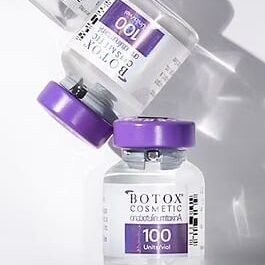
Wrinkle Relaxers (Botox)
Botox. Xeomin. Dysport. Jeuveau. Neurotoxin (tox) injections are used to prevent muscle contraction which translates into effectively smoothing facial stubborn age lines and certain unwanted lines of expressions
$11 per Unit for Botox, Xeomin and Jeuveau. $4 per unit for Dysport
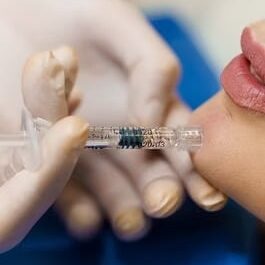
Dermal Fillers
Dermal fillers are a non-surgical, cosmetic treatment that can help us address volume loss by giving us the desired fullness of certain areas, such as lips or facial skin folds, allowing us to enjoy a more youthful and plumping appearance.
$650-$750 per Syringe (depends on the brand used)
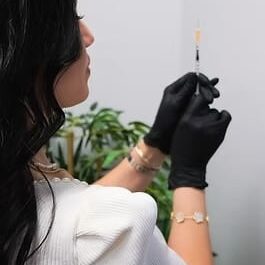
Filler Disolving
Hylenex. Used to dissolve unwanted filler. When injected into the skin, it works to break down the HA from the HA dermal filler at an accelerated rate so that the body can absorb it quickly. Multiple sessions may be needed.
$200 per Vial (more than 1 vial may be needed)
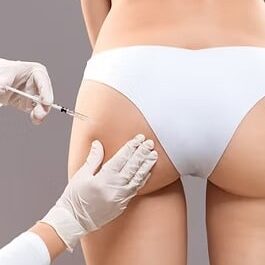
Sculptra
Sculptra is a biostimulator. It is injected into the deep layer of the skin and it promotes our own body to begin producing new collagen. The skin becomes noticeably firmer and smoother. Three treatments are recommended for desired results.
$700 per Vial (more than 1 vial may be needed)
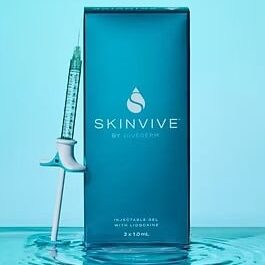
Skinvive
Skinvive is an product that works as a "skin booster". It is injected in the skin to increase hydration, smooth texture, and to improve skin appearance without changing the facial structure. Meant to make your complexion look healthier and softer. Patients reported a lasting glow through 6 months.
$650 per Syringe

PRF
Uses platelet-rich fibrin with a high concentration of both platelets and growth factors. This triggers stem cell activity to spur elastin and collagen production. Improves skin tone and texture, brightens the under-eye area, firms the skin and soften fine lines.
$350 per session (3 sessions recommended)

PDO Threads
The non-surgical face lift. This is a minimally invasive procedure that involves passing a temporary, dissolvable threads beneath the surface of your skin to provide some immediate lift and stimulate collagen growth over time, resulting in firmer tissue.
Lift PDO starts at $1,200.
Collagen PDO starts at $400

Kybella
For the "double chin". It is the only FDA-approved injectable treatment that destroys fat cells in the treatment area under the chin to improve your profile. It destroys fat cells, resulting in a noticeable reduction in fullness under the chin. Further treatment is not expected.
$750 per Vial (more than 1 vial may be needed)
Fillers FAQs
What are dermal fillers?
Dermal fillers are injectable treatments used to restore volume loss for a more plump and youthful appearance. They are used on the face to soften wrinkles and creases, and they are very famous for restoring fuller lips.
Are there different types?
Dermal fillers come in various forms. The types of off-the-shelf fillers include:
- Hyaluronic acid (HA) which is a naturally occurring acid in your skin. Results from HA injections usually last six months to a year. Restylane® is a commonly used type of HA filler.
- Calcium hydroxylapatite (CaHA) is a type of filler that consists of a substance you have in your bones. Results from these fillers typically last around a year and many providers like to use this filler for deeper wrinkles. Examples of CaHA fillers include Radiesse®.
- Poly-L-lactic acid (PLLA) is a substance that helps your body create its own collagen. The results can last two years or more. Types of PLLA fillers include Sculptra®.
- Polymethylmethacrylate (PMMA) fillers consist of a collagen base and polymethyl methacrylate (PMMA) microspheres that stay under your skin after they are injected. These microspheres give your skin volume and keep it firm. Bellafill® is one type of PMMA filler. It is commonly used for acne scarring, for example.
What determines what dermal filler is best?
Depending on your treatment goals, location wanting to be addressed, how long we want it to last, and patient’s medical history, is how we choose which type is best for the patient.
Who should NOT get a filler?
Pregnant or breastfeeding women, people allergic to any of the components of the fillers, patients in blood thinners and immunosuppressed should not get dermal fillers. Caution should also be taken for those who have a history of severe scarring or have a pigmentation disorder.
Are dermal fillers better than Botox?
Not exactly. Because dermal fillers and Botox address similar but also different areas of concern, they can actually be used together to achieve the desired results. Benefits of this are evaluated on a case-by-case basis.
Are dermal filler injections painful?
They can be a little bit painful just like any other injection. However, a topical anesthetic can be applied to the treatment area before injections to help ease the pain.
What is the after care?
For the following 24 hours you should refrain from strenuous exercise, and excessive sun exposure to help decrease redness and irritation following the procedure. You should also avoid taking any nonsteroidal anti-inflammatory drugs (NSAIDs) for one week to help reduce the risk of bruising. And it is ideal to also refrain from using RetinA on your face for several days to lessen prolonged redness.
What is the recovery time after getting dermal fillers?
Everyone’s recovery time is different, and it may depend on the size of the area that was treated. However, most people can get back to the activities they enjoy right after getting dermal filler injections.
Can dermal fillers be removed?
Most fillers can be removed, but not all. What the filler is made of determines if they are naturally absorbed by the body or permanent.
What are the risks or complications of dermal fillers?
Overall, dermal fillers are relatively safe and effective. Serious complications are rare, and some of these side effects are only temporary. But as with any cosmetic surgery procedure, there are risks. They include asymmetrical appearance, bleeding, bruising, pain, swelling, scarring, infection of the area treated, lumps or bumps under your skin, numbness, and itching, among the more common ones. The downside? Most fillers are not permanent so additional treatments may be needed.
Tox FAQs
For the purpose of this discussion we will use Botox, the brand, to educated about neurotoxins. Note that they all work and behave in similar ways, therefore it applies.
What is Botox?
Botox is a very diluted concentration of a neurotoxin that is able to block the nerve signals to the muscle in which it was injected, limiting its ability to contract and, in turn, weakens or paralyzes the muscle temporarily. The end result is the diminished appearance of facial lines that are seen as a result of wrinkling of the skin above the treated muscle.
What is Botox used for?
Botox is used for a variety of things in the medical field but is most often used to lessen the signs of aging. Years of smiling, frowning, drinking from straws, and even laughing can cause creases in our faces.
Who is a good candidate?
Just about anyone who has fine lines, wrinkles, a gummy smile, or skin dimpling of the face is a candidate for Botox. However, it should not be used while pregnant or breastfeeding. It is good practice to start using it in your 20s and 30s in an attempt to prevent the formation of permanent cracks in the skin that are seen after decades of facial expressions.
What is a Botox treatment like?
Botox is directly injected through a tiny needle into the specific facial muscle that we want to treat. The areas to be injected can be cooled with an ice pack immediately prior to injection to reduce needle discomfort. The complete treatment lasts just a couple of minutes (depending on the size of the area being treated). Occasionally, if desired by the client, we may apply topical anesthesia to the area treated but this will require 45-60 minutes of wait time for the numbing to take. However, this procedure does not require the use of topical or local anesthetics. Effects start to be more evident after 5-7 days.
Could I get a “frozen face” from Botox injections?
The effect of Botox is dose-dependent, and thus the degree of muscle contraction impairment can be varied by the amount of neurotoxin that is administered in any given treatment area. Over-treatment of the forehead, for example, will have the effect of lowering the brows, which will affect many facial expressions.
What is recovery like?
Unlike other facial procedures like facelifts or brow lifts, which can take weeks to recover from, there is relatively no downtime needed after Botox injections. Recovery is probably one of the top reasons patients seek out Botox, since they can go on their day as usual.
Is there a permanent alternative to Botox?
It is said that with continuous use of Botox over many years it is possible to achieve a gradual complete disappearance of deep, vertical furrows between the eyebrows (frown or ‘scowl’ lines). When these frown muscles are never allowed to contract, they may gradually fade.
The reality is that not all wrinkles are appropriate targets for Botox, so the evaluation and treatment of every face must be individualized and assessed by an expert. More permanent improvement of facial wrinkles and creases can be accomplished with a variety of techniques, including microneedling and radiofrequency which we also provide here at EmmVera Aesthetics.
How long does Botox last?
Results can vary from patient-to-patient but usually they last three to six months. When the effects of Botox start to wear off after a few months, your muscles will begin to relax again, and the wrinkles will return.
What NOT to do after Botox?
After these injections you should avoid intense physical activity, massage tools, or anything that causes increased blood flow throughout the body, including in the face, and can move the injected neurotoxin before it has a chance to bind to the intended muscle in the treated area. This may result in weakening additional nearby muscles that were not originally the target, affecting the general results for several months. We suggest waiting at least 12 hours before doing any kind of exercise that is going to get your heart pumping. You should also avoid inverting your head, such as when doing a yoga downward dog position, for at least four hours after injections to prevent migration of the toxin. Also, it is good practice to wait at least 30 minutes after getting your injections to apply makeup.